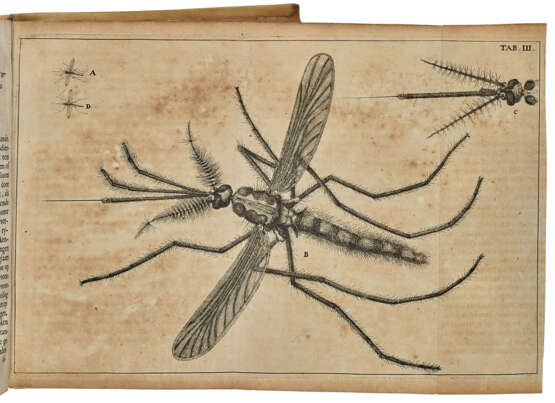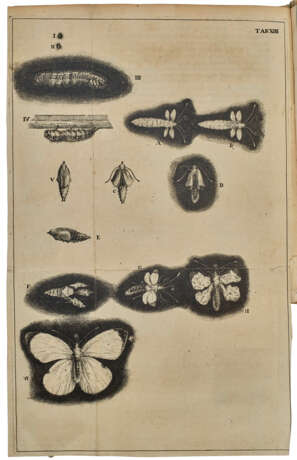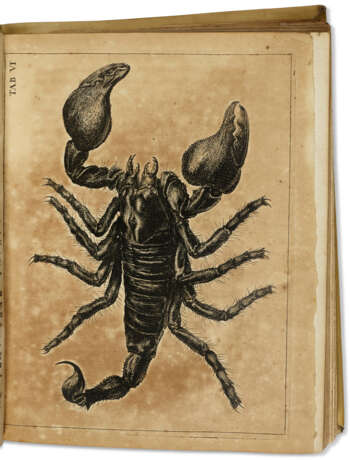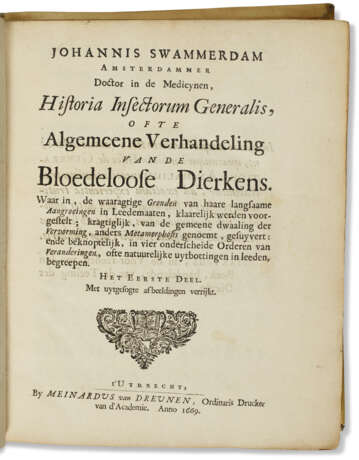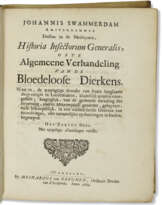ID 1236284
Lot 54 | Historia insectorum Generalis
Estimate value
$ 1 000 – 15 000
First edition of Swammerdam's transformative investigations of the microscopic anatomy of insects—"the overthrow of the idea of metamorphosis" (DSB). The author was the son of an amateur collector of curiosities, including insects, and he began to form his own insect collection while studying medicine as a young man in Leiden. A friend of Leeuwenhoek, he used a single-lens microscope to make minute studies of insect anatomy. His work demonstrated that the developmental phases of insect life—from egg to larva to pupa to adult—are a continuous process of anatomical change, and suggested that all biological processes are fundamentally the same, with no distinction between insects and so-called "higher animals."
"Swammerdam’s thesis about insects was fundamentally new and significant. For his contemporaries, as for Aristotle, there existed three good arguments that not only placed the insects far from higher animals, but even tended to remove them from the realm of subjects open to scientific study. These arguments were: insects lack internal anatomy; they originate by spontaneous generation; and they develop by metamorphosis" (DSB) Swammerdam's work disproved this utterly, using both evidence from dissection of larval and chrysalid forms as well as a comparative approach to argue that all development occurs according to one model—just sometimes less obvious to the naked eye. His work prefigures and probably influenced that of another keen-eyed Dutch scientist interested in the nature of metamorphosis: Maria Sibylla Merian. Garrison and Morton 294; Nissen ZBI 4052; see DSB XIII pp 168-175 and F.J. Cole, "Swammerdam" in History of Comparative Anatomy (1949, pp 270-305).
Quarto (194 x 154mm). Half title. 13 engraved plates, 8 of which folding; folding table with illustration captions (plates somewhat browned). Contemporary Dutch vellum ruled in blind (text block separating from cover, but sewing sturdy). Provenance: David P. Wheatland, 1898-1993, founder of the Harvard Collection of Historical Scientific Instruments (bookplate).
| Artist: | Jan Swammerdam (1637 - 1680) |
|---|---|
| Place of origin: | The Netherlands |
| Auction house category: | Medicine & science, Printed books |
| Artist: | Jan Swammerdam (1637 - 1680) |
|---|---|
| Place of origin: | The Netherlands |
| Auction house category: | Medicine & science, Printed books |
| Address of auction |
CHRISTIE'S 8 King Street, St. James's SW1Y 6QT London United Kingdom | |
|---|---|---|
| Preview |
| |
| Phone | +44 (0)20 7839 9060 | |
| Buyer Premium | see on Website | |
| Conditions of purchase | Conditions of purchase |
